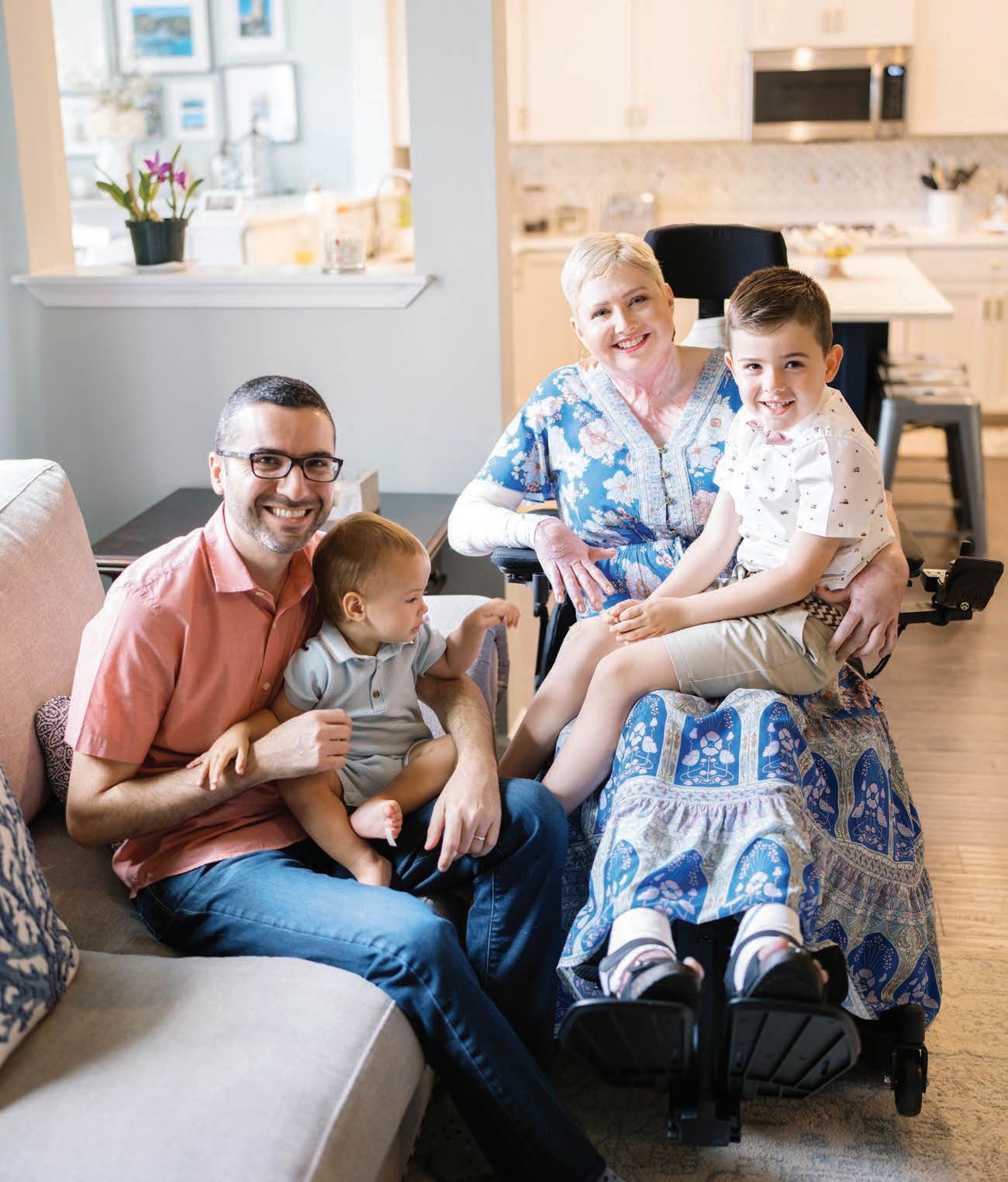
3 minute read
WELLNESS
DIY DOCTOR’S VISIT
Carilion Clinic and TytoCare bring handheld healthcare to Southwest Virginia.
Advertisement

WITH THE HELP of a handy AI-powered examination kit, nearly one million Carilion Clinic patients across the southwest region now have access to frontline telehealth technology, thanks to a recent partnership with TytoCare, a leader in telemedicine software.
TytoCare’s exam kit guides users to perform physicals during virtual visits, diagnosing and treating acute and chronic conditions conveniently and comfortably from home.
“We’re excited to bring these capabilities to rural communities that have historically been unable to use this new standard of healthcare,” says Stephen A. Morgan, M.D., Carilion senior vice president and chief medical information officer. “TytoCare’s technology is intuitive and easy to use for our patients and providers.”
Carilion will use TytoCare for patients with chronic conditions, significantly reducing time spent in doctor’s offices or hospitals. The device also allows for remote monitoring of pediatric asthma patients. Additionally, Carilion plans to distribute examination kits to rural school districts, increasing access to physician care for teachers and students.
TytoCare devices are available for purchase online or through Carilion. CarilionClinic.org, TytoCare.com
TMS TACKLES DEPRESSION
FROM ANXIETY TO SHYNESS to inattention, it seems there’s a medication for every mental health diagnosis. But for major depression, a non-drug treatment known as Transcranial Magnetic Stimulation (TMS) has proved a game-changer, especially for patients who’ve had little success with prescription antidepressants.
“TMS technology harnesses the magnetic aspect of electricity,” explains Dr. Walter S. Jennings of Tucker Psychiatric Clinic in Richmond. “It’s directly delivered into the brain and changes its function in a way that is focused, safe, and non-invasive.”
Jennings has used the NeuroStar TMS device, which is FDA approved, in approximately 300 patients. “I’m so impressed not just with how well it works, but how little it hurts,” he adds. “We have people who are getting TMS while watching a movie or chatting with the technician. Not many effective treatments can claim that.”
During TMS treatment, patients sit in what resembles a dentist’s chair while a magnetic coil repeatedly taps on a small, targeted spot on their head. Patients typically receive 20-30 half-hour sessions over a six week period. Side effects are usually limited to temporary soreness at the delivery point. Most insurance companies now cover the cost of the treatment.
Although follow-up sessions may be needed in some cases, the vast majority of TMS patients experience meaningful relief, often starting at two to four weeks. “We look for when they start getting their lives back,” says Jennings. “We want them to be able to function, and we want them to feel better.” TuckerPsychiatric.com/NeuroStar, NeuroStar.com —by Margo Peters Millure
—by Vayda Parrish

TELEMEDICINE TIPS
How to make a virtual visit count? “There’s a lot you can do to make telehealth work for you,” says David Switzer, M.D., medical director of Population Health for Valley Health in Winchester. “The big thing is to be organized.” His pointers:
ȕ Keep the meeting link handy and testdrive the technology in advance to avoid fumbling with the mute button during valuable appointment time. Find a private place where you can talk freely. ȕ Write up a list of topics to cover. Note any symptoms, and if they’re sporadic, keep a diary to track when they occur, how long they last, and whether they’re linked to specific foods or activities. ȕ Gather medications and jot down doses along with your pharmacy name and phone number.
Mention supplements and over-the-counter remedies, too. Type this info into the chat box so your provider has it in writing. ȕ Take your temperature and check weight and blood pressure beforehand. ȕ Check dates of your last screenings. Now is the time to get a referral for a colonoscopy or mammogram. ȕ If you’re due for bloodwork, get it done before the appointment, so you and your doctor can go over your results together. ȕ Check lighting to make sure your doctor can evaluate a rash or incision and assess range of motion—make sure they can see clearly. Can you zoom in on a suspicious mole? If not, take a photo or shoot a brief video to share during the call. —by Cathy Herbert










